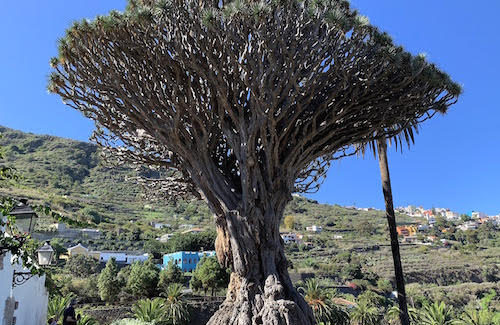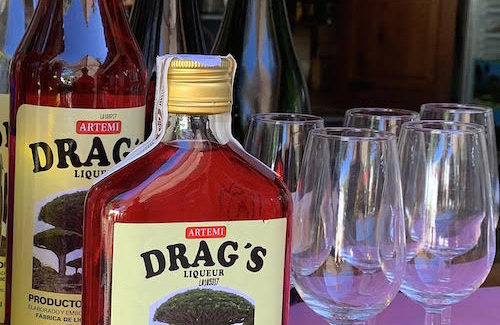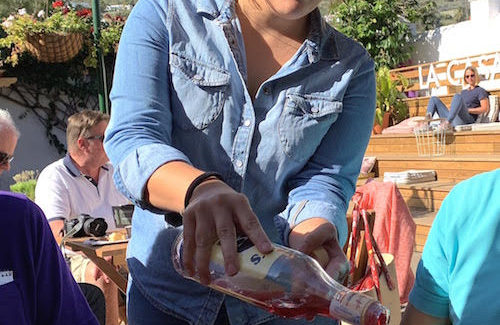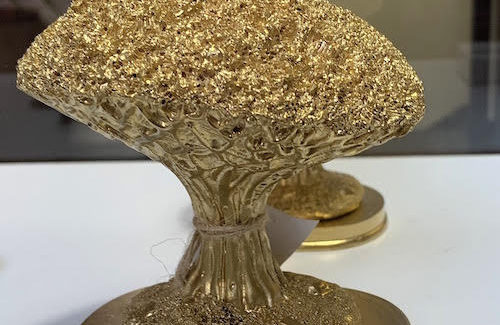Visiting the Canary Islands: Dragon Trees Said to Spill ‘Dragon Blood’
Legend says that when dragons die, they become dragon trees. So the liqueur I am drinking is named dragon’s blood since it came from the legendary dragon tree.
“It is called Drag,” tour guide Cathy Michel says while I savor a drink at La Casa del Drago. “It comes from the dragon tree. It tastes good and is good for you.”
The first time I saw one of these historic trees on the island of Tenerife, I thought it looked like a gigantic stalk of broccoli.
The curious plants have a big rooted bottom and a slender middle with a bunch of bushy greens at the top. Certainly don’t look like the trees at home.
As a symbol of the Canary Islands and the national tree of Tenerife, the unusual tree was once considered a divine tree by the early inhabitants of the islands. In Greek mythology, the story goes that when Hercules killed the 100-headed dragon Ladon who was guarding the Golden Apples in the Garden of Hesperides, the dragon’s blood spilled over the land and from it sprang dragon trees.
Another mythology story says that the dragon Ladon may have inspired the name of the constellation of Draco – Latin for “dragon.” The tale says that Hera, in her rage and sorrow over her dragon’s death and the theft of her Golden Apples, heaved the dead dragon into the stars in honor of its dutiful service.
Whether the dragon is commemorated in the heavens or on earth, the tales are all fascinating.
The natives of the Canary Islands, the Guanches, celebrated their spiritual meetings and imparted justice around the Drago. They considered it a sacred place.
The trees can live for hundreds of years, and the one I am standing beneath in the town of Icod de los Vinos on Tenerife’s northern side is reported to be over 1,000 years old. Known as El Drago Milenario (The Thousand-Year-Old Dragon), the tree stands almost 60 feet tall and is said to be the oldest tree on the planet.
“It is difficult to tell its real age because dragons trees have no annual tree rings like other trees,” Cathy says. “Some people say it is older. Some people say it is not as old.”
A plaque near the tree notes that it is between 1,0000 and 2,000 years old. Records dating back to 1503 mention the tree as a boundary line in a land grant. Regardless of its age, what is unmistakable is the tree’s majesty. Its breaches spread out like countless sheltering arms.
When the dragon tree’s leaves or bark are cut, they secrete a red-colored resin. In the past, the resin was extracted on an industrial scale and used to make varnishes and lacquers. The sap was popular for staining violins their signature deep red color and was also used for medicinal purposes and to ward off evil spirits.
“Many of the trees disappeared because of that so now the dragon tree is a protected species,” Cathy says.
Since the Millennium tree originally was located on private property, the city acquired the tree in 1916 to protect it. In 1917, the tree was declared a National Monument because of its age and historic symbolism. It now stands securely in its own park setting where folks can admire it.
Next to the storied tree is La Casa del Drago, a stately building with a lovely café, courtyard, botanical garden and shops. One of the most popular souvenirs – besides a bottle of dragon blood liqueur – is tiny replicas of the ancient dragon tree.
Photos and story by Jackie Sheckler Finch


















View Recent Comments